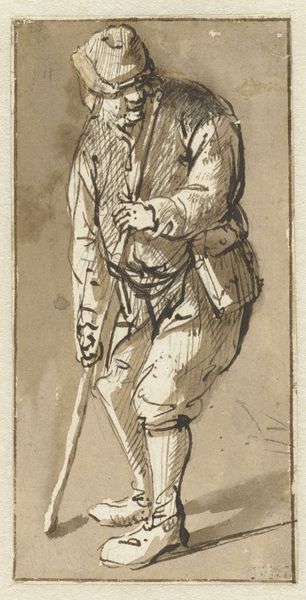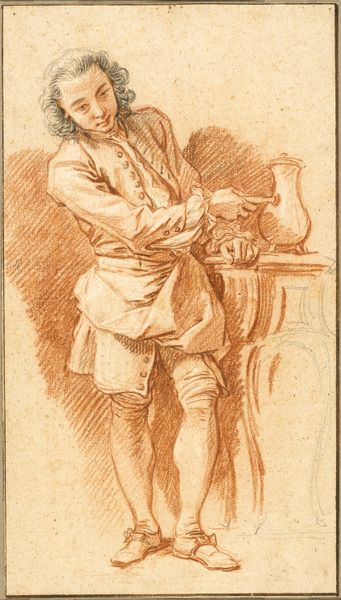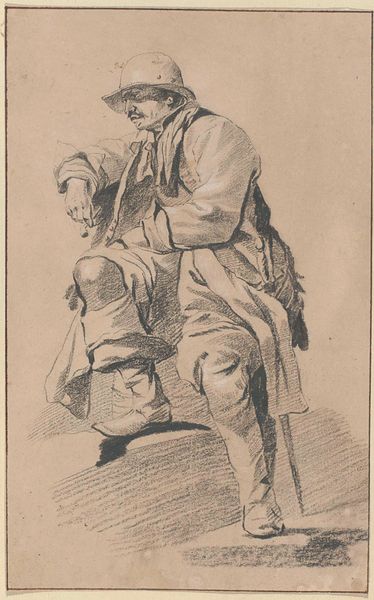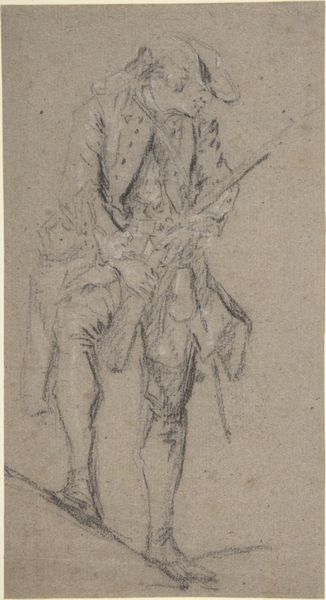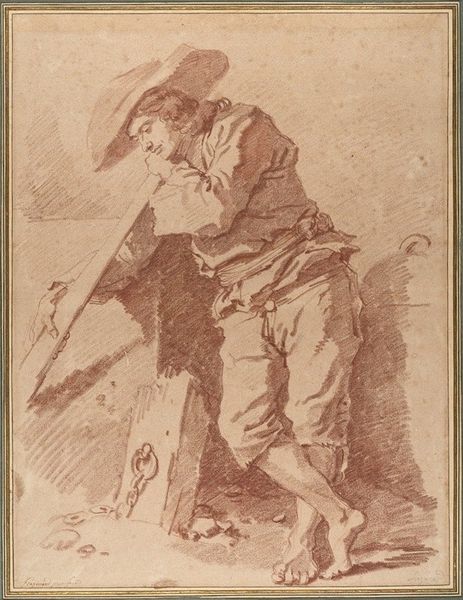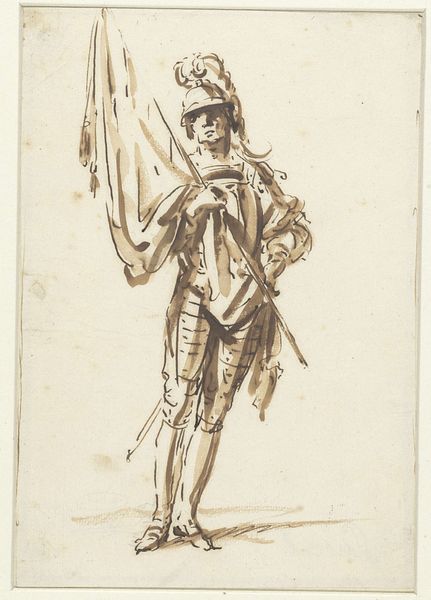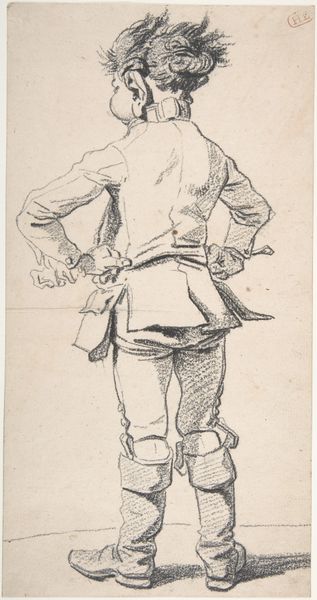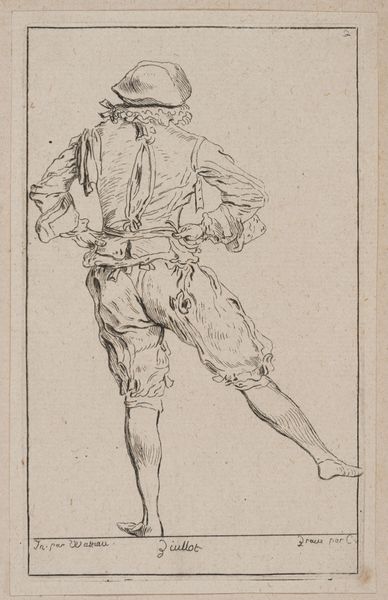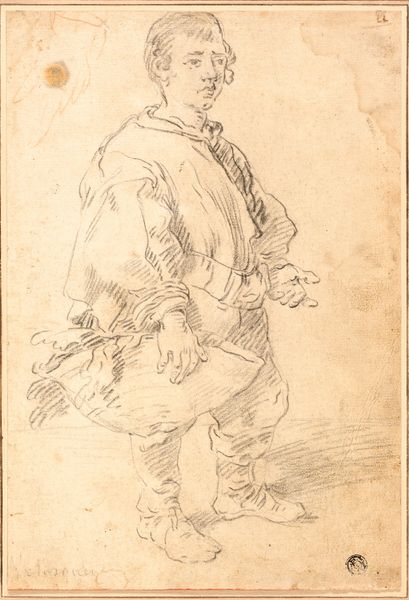
Study for La Flèche Whose Pockets are Being Searched by Harpagon 1713 - 1734
0:00
0:00
drawing, paper, pencil
#
portrait
#
drawing
#
pen sketch
#
pencil sketch
#
figuration
#
paper
#
11_renaissance
#
pencil
#
sketchbook drawing
#
academic-art
Dimensions: height 309 mm, width 185 mm
Copyright: Rijks Museum: Open Domain
Curator: We’re looking at a drawing by François Boucher titled "Study for La Flèche Whose Pockets are Being Searched by Harpagon." It was created sometime between 1713 and 1734 and is currently held in the Rijksmuseum. It’s rendered in pencil on paper. Editor: Immediately, I'm struck by the figure’s downward gaze, almost suggesting shame or guilt. And then that aggressive searching gesture. What an unsettling yet evocative dynamic captured in just a few strokes. Curator: The work is indeed related to Molière’s play, "The Miser." Boucher's visualizations added significantly to the play’s cultural footprint in France. Visual depictions can legitimize, if you will, a theatrical work for the public. Editor: Precisely. And La Flèche embodies that symbolic "trickster" figure we see so often across cultures—the clever servant disrupting the established order, pockets overflowing (or not!) with stolen goods or secrets. It invites considerations about what La Flèche might represent about the broader dynamics of power and control in the early modern era. Curator: The sketch serves to highlight what an important cultural phenomenon the play was and its capacity to engage French society at this time. Note how quickly it also shows a specific visual interpretation becoming codified around this character. Editor: Also, it might be helpful to note that the partially sketched second figure adds another layer to our understanding, serving as an additional tool for contrasting La Flèche against the wealth Harpagon desperately hoards, perhaps visualizing the internal struggle between obedience and rebelliousness, mirroring the social tensions prevalent during the 18th century. Curator: And seeing this on paper gives us an intimate glimpse into the artist's working process. Here, in a publicly-owned collection, is evidence of the production processes of canonical works in plain sight. It reveals to the public that even Boucher went through sketching processes. Editor: Ultimately, the study stands as a powerful example of the symbiosis between art, theater, and the societal issues prevalent in the era it came to prominence in. Curator: Absolutely, a tangible reminder of art's public role, capturing not just characters but the very spirit of a time.
Comments
rijksmuseum about 2 years ago
⋮
Boucher illustrated a special edition of the complete works of the French playwright Molière. This drawing shows a scene from L’Avare (The miser) in which the old miser Harpagon searches the pockets of his valet, La Flèche, for money. Boucher rendered Harpagon sketchily to try out how he would ultimately place the two figures in the final composition.
Join the conversation
Join millions of artists and users on Artera today and experience the ultimate creative platform.
